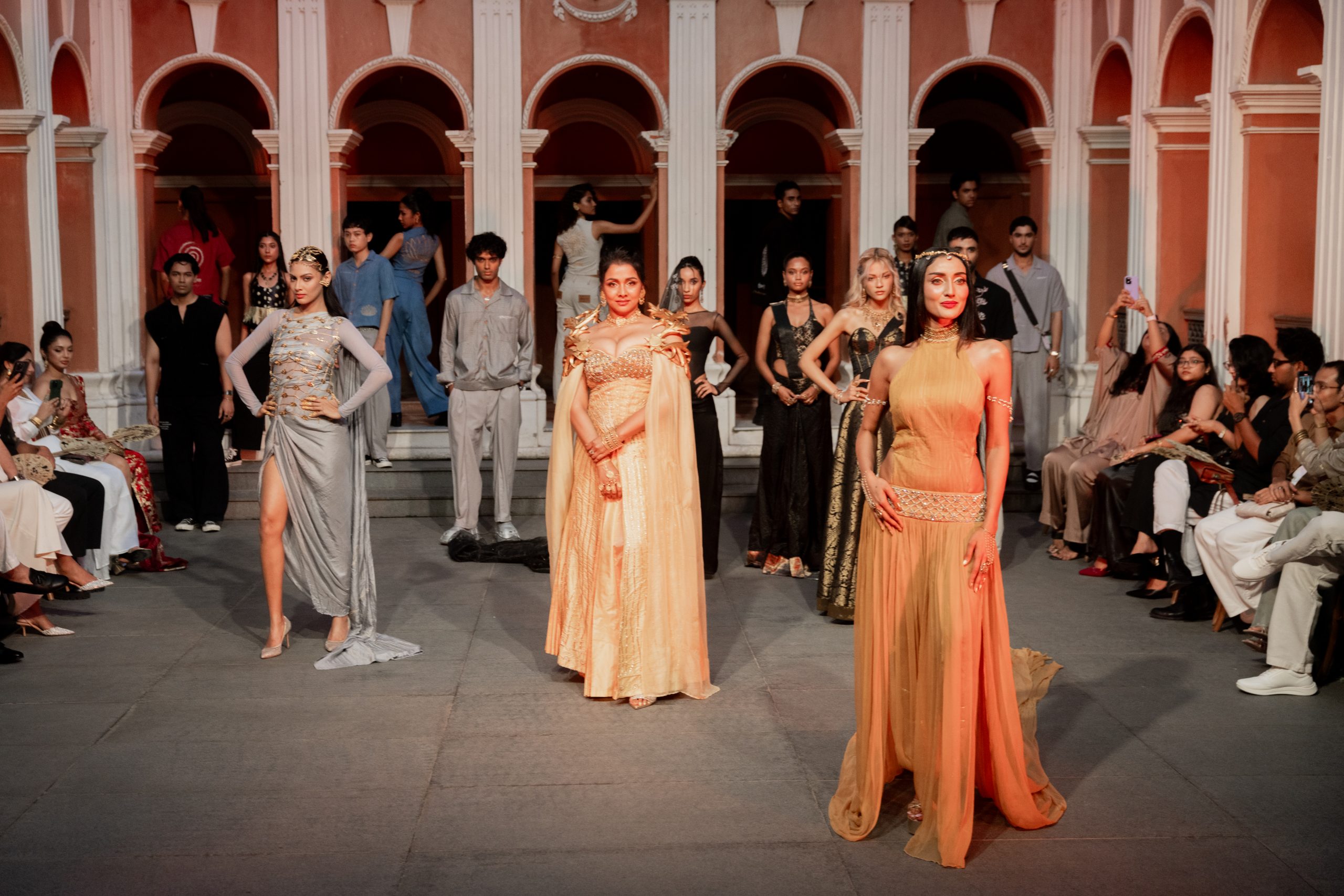
You see a lot of runway shows, but rarely do they feel like a real journey. Ami Dhaka’s event, in collaboration with Be Here Now, at the Boro Sardar Bari was one of those rare moments. The showcase made one thing immediately clear: creative director Asad Sattar has a very specific and compelling point of view. Rather than simply presenting a new season’s clothes, Asad used the historic backdrop of the Boro Sardar Bari to deliver a genuine vision for the brand.
Asad’s collection, which he calls “Heritage Futurism,” is built on the idea that fashion can look back as much as it looks forward. In a recent conversation with ICE Today, he goes on to elaborate on this unique concept: “Heritage futurism means looking at heritage from a futuristic perspective, not just in a contemporary sense, but envisioning ourselves in the future and thinking about what heritage could mean.” You could see it in the pieces—the cropped blouses, dhoti-inspired pants, fluid draping—full of bold shapes and thoughtful details, felt like a genuine shoutout to the city. The most impressive part was that every garment bore a personal touch; a sign of a real hand at work, whether it was in the stitching or the embroidery. It shows a commitment to making clothes that feel special, like a gift from the city itself.
The materials used were a beautiful mix of silk, muslin, khadi, and katan, all brought to life with intricate karchupi, zardosi, kantha stitches, block prints, and Benaroshi weaves. This blend of heritage and future was also evident in how the fabrics were used. For instance, Asad worked with weavers to create sarees, which were then cut into modern silhouettes like corsets and lehenga-style skirts. He also used traditional khadi but finished it with modern machinery, an innovative process that gave the fabric a sleek yet rugged texture.
Asad crafted each chapter to tell a distinct story, beginning with a poem he wrote himself, inspired by iconic works like Kazi Nazrul Islam’s “Bidrohi.”
The show was structured in five chapters: Punarjonmo (Rebirth), Nodir Dak (Call of the River), Oitijjho (Heritage), Nishir Nogor (City of the Night), and Chiroshaari (The Eternal Saree). Asad crafted each chapter to tell a distinct story, beginning with a poem he wrote himself, inspired by iconic works like Kazi Nazrul Islam’s “Bidrohi.” This literary influence continued throughout the show, from pieces that reflected the textures of old Dhaka to those that captured the restless energy of the city at night. The show’s finale was a powerful tribute to the saree, with handwoven black and gold katan sarees that seemed to hold generations of stories within their achol.

When asked about the show’s unique format, Asad, who has clearly given the matter some thought, didn’t miss a beat. “Fashion today is no longer just about making a statement with what you wear,” he shared. “It’s multimedia, mixed-media storytelling.” The models played a big part in that, with a diverse group that featured industry favourites like Tangia Methila, Jessia Islam, Runa Khan, Raaz Mania, Seyam Sobhan, as well as rising talents discovered by Asad Sattar himself via Arka.
However, the show’s magic, I think, lay in its emotional resonance. Fashion is, after all, a conversation. There was a conscious effort to create an experience where the location, sound, and narrative were all part of the story. It left you with the feeling that you weren’t just observing a collection, rather, you were taken on a journey through Dhaka—or, perhaps a reminder, that fashion can, and should be, a living part of a city’s story, reflecting and shaping its identity.
